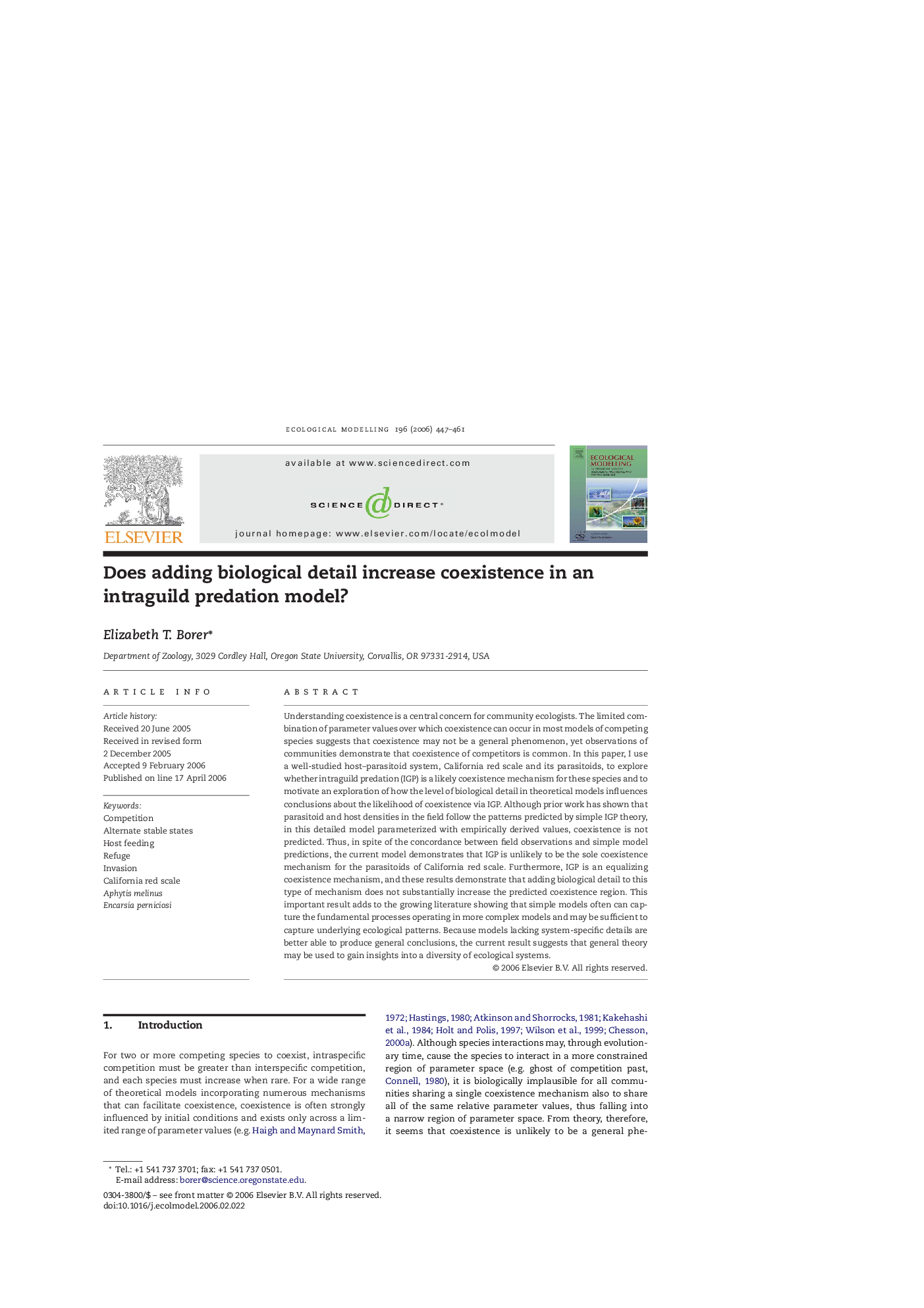| Article ID | Journal | Published Year | Pages | File Type |
|---|---|---|---|---|
| 4379161 | Ecological Modelling | 2006 | 15 Pages |
Understanding coexistence is a central concern for community ecologists. The limited combination of parameter values over which coexistence can occur in most models of competing species suggests that coexistence may not be a general phenomenon, yet observations of communities demonstrate that coexistence of competitors is common. In this paper, I use a well-studied host–parasitoid system, California red scale and its parasitoids, to explore whether intraguild predation (IGP) is a likely coexistence mechanism for these species and to motivate an exploration of how the level of biological detail in theoretical models influences conclusions about the likelihood of coexistence via IGP. Although prior work has shown that parasitoid and host densities in the field follow the patterns predicted by simple IGP theory, in this detailed model parameterized with empirically derived values, coexistence is not predicted. Thus, in spite of the concordance between field observations and simple model predictions, the current model demonstrates that IGP is unlikely to be the sole coexistence mechanism for the parasitoids of California red scale. Furthermore, IGP is an equalizing coexistence mechanism, and these results demonstrate that adding biological detail to this type of mechanism does not substantially increase the predicted coexistence region. This important result adds to the growing literature showing that simple models often can capture the fundamental processes operating in more complex models and may be sufficient to capture underlying ecological patterns. Because models lacking system-specific details are better able to produce general conclusions, the current result suggests that general theory may be used to gain insights into a diversity of ecological systems.
